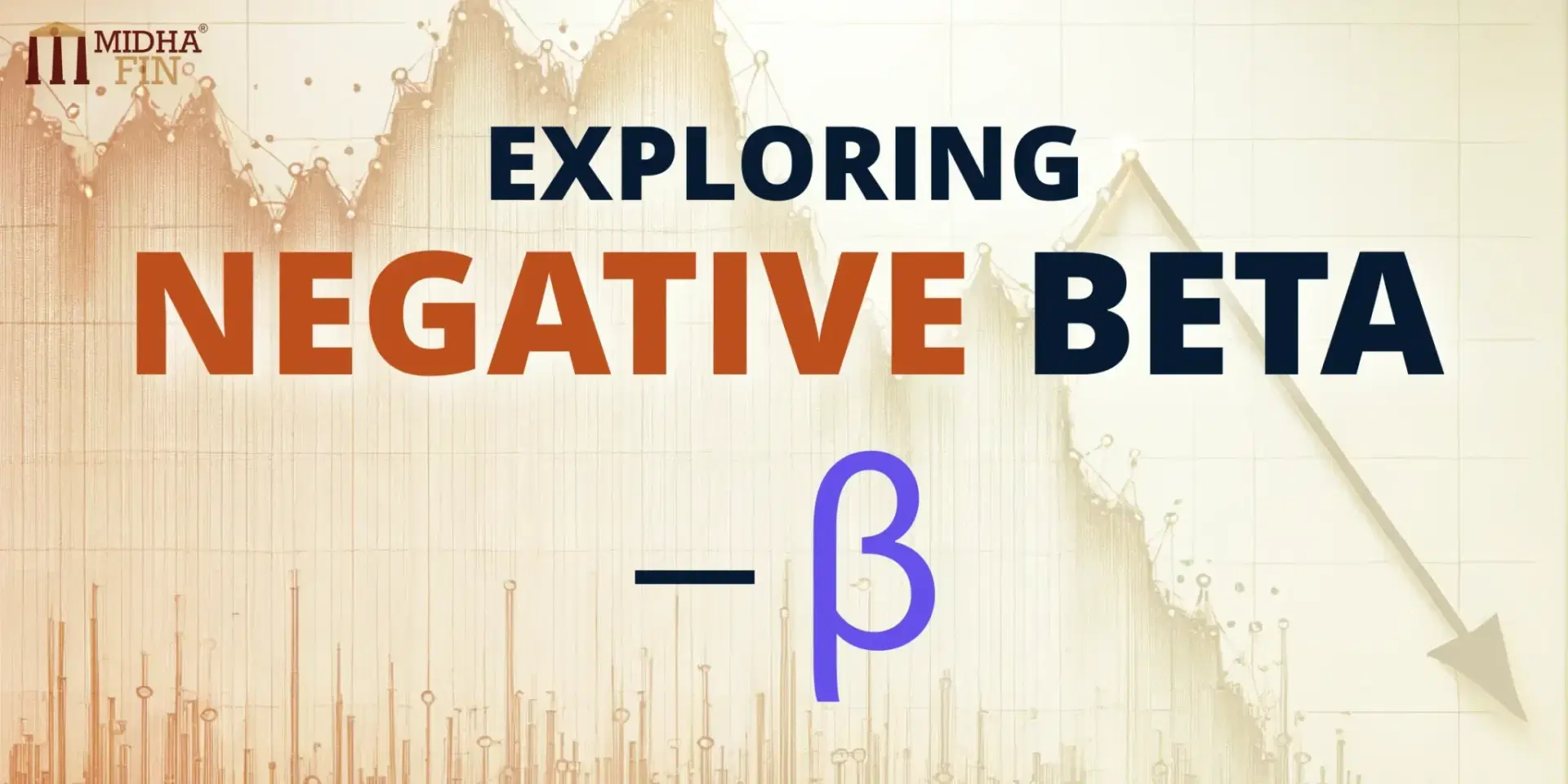Portfolio Theory |
Risk Management
Exploring Negative Beta

Understanding Beta
Beta (β) measures a stock’s volatility or the degree to which its price fluctuates relative to the market as a whole. A benchmark index is chosen to represent the market in the beta calculation. A beta less than 0, which would indicate an inverse relation to the market, is possible but highly unlikely. The inverse relationship in the context of negative beta implies that if the market moves up by 10%, any financial asset with a beta of -1 will move down by 10%. Thus, it represents the mirror image of the benchmark index.
Negative Beta vs. Positive Beta
Stocks are typically associated with positive betas, meaning they tend to move in the same direction as the overall market. If a stock has a beta greater than 1, it indicates that the stock is more volatile than the market. For example, if the market increases by 1%, a stock with a beta of 2 will likely increase by 2%. Conversely, if the market declines by 1%, the stock with a beta of 2 will likely decrease by 2%.
However, some stocks possess negative betas, indicating a negative correlation with the general market. These stocks tend to move in the opposite direction to the market. For instance, a stock with a beta of -1 will decrease in value by 1% for every 1% increase in the general stock market, and vice versa. In short, positive betas indicate that stocks move in the same direction as the market, while negative betas signify a negative correlation.
Examples Illustrating Negative Beta
- Gold is a classic example of a negative beta investment. During times of economic downturn or inflationary pressures, the value of gold tends to rise. Investors seeking to hedge against these risks often allocate a portion of their portfolio to gold or gold-backed securities.
- Put Options on Stocks Put options provide investors with the right to sell an underlying stock at a predetermined price within a specific time frame. The put options on stocks typically have negative betas because they rise in value when the stock price declines. These options act as a form of insurance, allowing investors to protect their portfolios from significant market downturns.
- Selling Forward Contracts against Indices Forward contracts allow investors to sell an asset at a predetermined price in the future. When an investor sells forward contracts against indices, they create a negative beta position. If the market declines, the value of the forward contracts increases, offsetting potential losses in other portfolio holdings.
Additional Insights from Recent Research
- Cryptocurrencies as Negative Beta Assets Recent research suggests that certain cryptocurrencies might exhibit negative beta characteristics during specific market conditions. For example, Bitcoin has occasionally shown an inverse relationship with traditional stock markets, making it a potential candidate for diversifying portfolios, especially in times of economic uncertainty.
- Hedge Funds and Negative Beta Some hedge fund strategies are designed to achieve negative beta by employing various financial instruments and techniques. These strategies often involve short selling, derivatives, and other complex financial products that can provide an inverse exposure to market movements. By incorporating these strategies, hedge funds aim to generate positive returns even when the market declines.
- Alternative Investments Investments in real assets such as real estate, infrastructure, and commodities (other than gold) can sometimes exhibit negative beta properties. These assets often have different return drivers compared to traditional equities and bonds, providing a hedge against market downturns.
- Impact of Market Sentiment Market sentiment plays a significant role in the behavior of negative beta assets. During periods of extreme fear or euphoria, assets with negative beta may react more sharply as investors seek safe havens or risk mitigation strategies. Understanding the nuances of market sentiment can help investors better predict and utilize negative beta assets effectively.
Strategic Considerations
- Analyzing Optimal Allocation When incorporating negative beta investments into a portfolio, it is essential to determine the optimal allocation. This involves analyzing the investor’s risk tolerance, investment goals, and market outlook. By striking the right balance between negative beta assets and other investments, investors can tailor their portfolios to manage risk and maximize returns effectively.
- Insight into Correlation Structure Investors should also assess the correlation structure of their portfolio, considering how negative beta investments interact with other assets. While negative beta investments can provide diversification benefits, their effectiveness may vary depending on the overall correlation among portfolio components. A thorough analysis of correlations is crucial to ensure the desired risk-reducing effects.
Explore our in-depth case study on the Boeing 737 Max Crisis for more insights.
Conclusion
Negative beta investments play a valuable role in portfolio management, offering risk-averse investors a means to mitigate systematic risks and enhance diversification. By including assets with negative betas, such as gold, put options, forward contracts, and potentially cryptocurrencies or certain hedge fund strategies, investors can strategically align their portfolios with their risk preferences and market outlook. As with any investment decision, thorough analysis, thoughtful allocation, and a deep understanding of market dynamics are key to achieving optimal outcomes. By harnessing the power of negative beta in the Capital Asset Pricing Model (CAPM), investors can navigate uncertainties with greater confidence, positioning themselves for long-term success.
Check out our course for comprehensive and top-quality FRM preparation.


